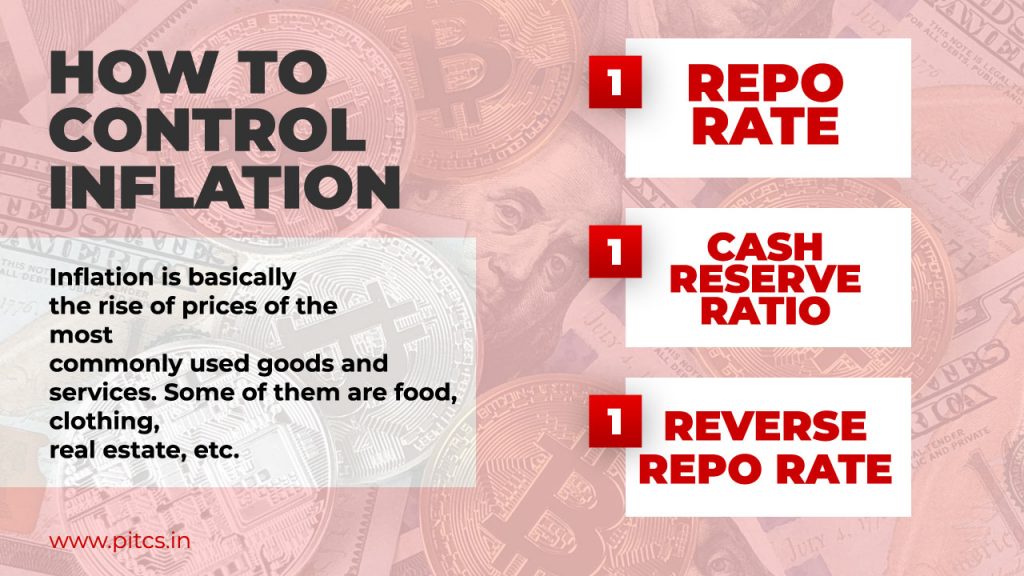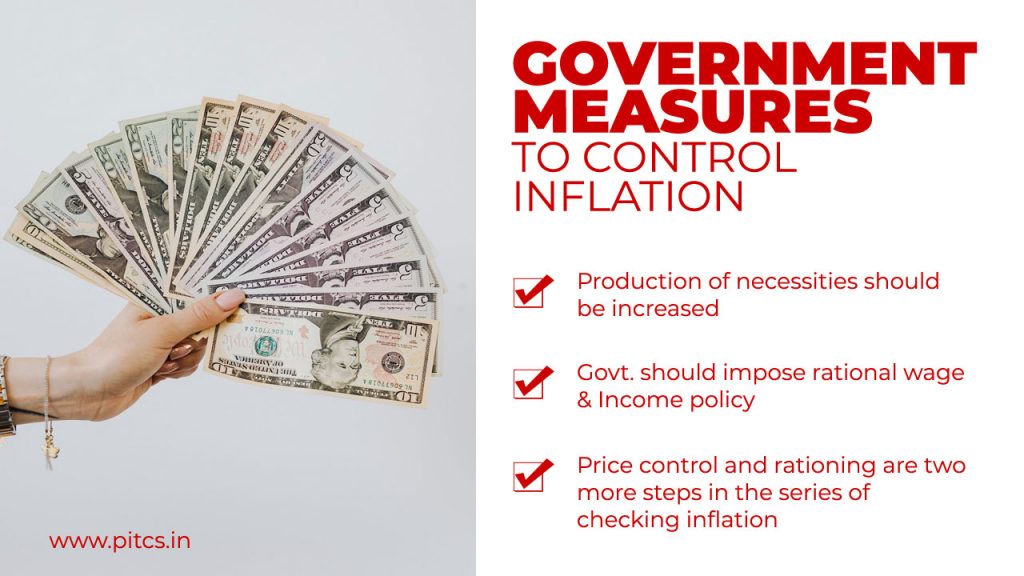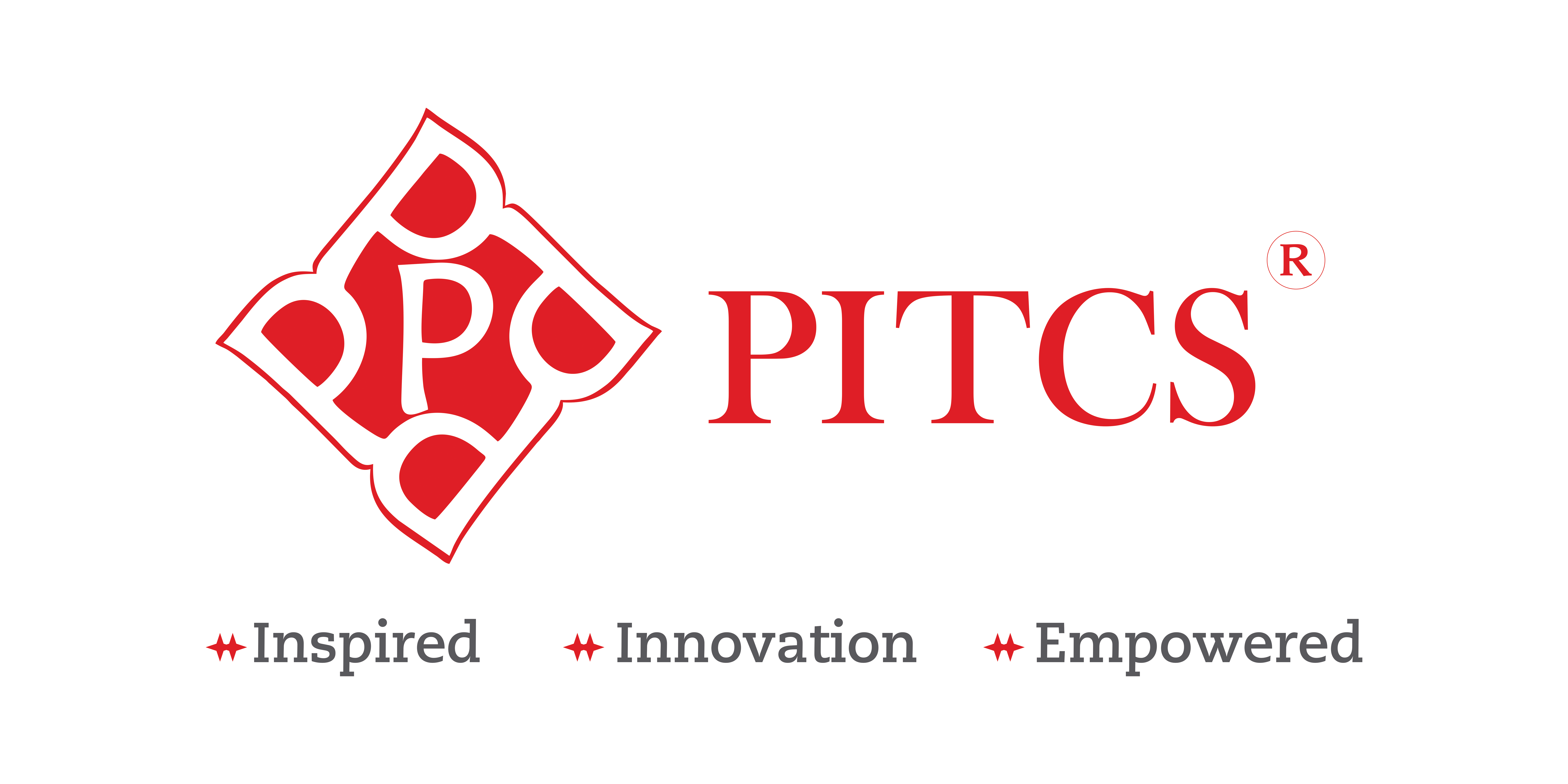Controlling inflation rate is a mandatory duty of the government and RBI. The Central Bank, in this case, rolls out some regulations that help in restricting inflation. In this blog, let us talk about the measures to control Inflation.
Table of Contents
What is Inflation?
Inflation is basically the rise of prices of the most commonly used goods and services. Some of them are food, clothing, real estate, etc.
Why is it necessary to control the inflation rate?
When the quantity of funds inflates above a particular threshold, the buying capability of the consumer class results in a goods and services deficit. This is mainly due to the flawed idea of capitalism.
It is mainly caused when supply falls short to meet the increasing demand. Inflation can only be restricted by boosting the supply of the good and reducing income.
This is when you resort to measures to control inflation. We are going to talk about repo rate, CRR, etc. that helps to keep inflation under control. These measures are of utmost importance as they create a balance in the economy.

How to control inflation?
Let us quickly read through the important points which are responsible to control inflation.
#1. Repo rate
This is the percentage with which RBI or Reserve Bank of India provides funds to commercial banks.
This is a very important percentage when it comes to the monetary outflow from the government. Commercial banks can take the help of RBI whenever they face a shortage of funds. Repo rate is a commonly used tool by the government in order to control inflation.
Government can curb the flow of money into the economy by using this tool. They can simply increase the repo rate that will restrict the flow of cash.
#2. CRR (Cash Reserve Ratio)
Another very important tool is the Cash Reserve Ratio. This instrument is generally used by the RBI. It can control the amount of funds that circulates in the economy. CRR actually reflects a particular amount of money that the commercial banks are allowed to keep with the Reserve Bank of India.
By increasing the CRR rate, the central government can have a significant impact on the inflation level. This is one of the best government measures to control inflation.
#3. Reverse Repo Rate
Another way to control inflation is by using the Reverse Repo rate. It is the rate at which commercial banks lend funds to the RBI.
Another way to control inflation is by using the Reverse Repo rate. It is the rate at which commercial banks lend funds to the RBI.
At any given point in time, an economy can face inflation or cash shortages. This is when the Reverse Repo rate comes to use as it is a portion of a liquidity adjustment facility employed by central banks.
Credit in point, it should be noted that the reverse repo rate is generally a percentile lower than the current repo rate. In an attempt to control inflation, the reverse repo rate enables RBI to extract funds from the economy.
Now let us talk about it in further detail.
1. Monetary Measures
Monetary measures to control inflation are an attempt to reduce income that can be done through these steps.
- Credit control: This is an important measure to curb the inflation level. The central bank embraces a few measures to control the quality as well as the quantity of credit.
To reach its goals, it not only raises the bank rates and reserve ratios but even sells securities in the open market. It also regulates consumer credit, which is proved to be helpful when there is a demand-pull factor present.
- Demonetization: This is an extreme step and is taken by governments to rule out the black money in the market. If the government feels that a huge amount of black money in the economy is having an effect, then it can cancel the money of denominations.
- Issue of New Currency: This is yet another extreme step taken by governments. It can launch a new currency, which can be replaced against the old notes. This is only done when there is hyperinflation in the country.

2. Fiscal Measures
Next, we would be talking about fiscal policy measures to control inflation. These steps work for controlling escalating government expenses, private investment, public investment, etc.
- Lowering extra expenses: The government should take steps to lower unnecessary expenditures in a bid to reduce inflation. Private expenses should also be controlled for the same. The measure must be supplemented with taxation.
- Increase in Taxes: The government can hike taxes and also employ new taxes to curb personal consumption expenses. However, the rise in tax levels must not discourage people to save and invest.
People evading taxation must be penalized by the government as well. Heavy fines should be paid by them. These steps have been fruitful in curbing inflation. The government should also increase export duties and reduce import duties.
- Increase in Savings: People should be encouraged to save more. This is expected to reduce disposable income among people. The government must actively work on public loans with high rates of interest, schemes with benefits, compulsory provident fund, provident fund-cum-pension schemes, etc.
- Surplus Budgets: The government may also embrace the anti-inflationary budgetary policy. This could be achieved by giving up deficit financing.
- Public Debt: It should control the repayment of public debt. It should be postponed at a later date until inflationary pressures are under control.
3. Other Measures
Some other government measures to control inflation include increasing production, lowering demand, etc.
- To Increase Production: Production of necessities such s sugar, food, oils, etc. should be increased. If required, raw materials for production must be imported to combat the crisis.
Rationalization, which aims at boosting productivity, must be taken up as a long-term strategy to control inflation.
The consumer goods sectors must be helped with financial aid, subsidies, raw materials, et al.
- Rational Wage Policy: The government should also impose a rational wage and income policy by freezing incomes, bonuses, dividends, and more. But yes, this is a huge step and must only be taken for a short while.
- Price Control and rationing: Price control and rationing are two more steps in the series of checking inflation.
Wrapping up
Rationing is the distribution of necessities to a large number of people. It includes rice, sugar, oil, wheat, et al. However, there are several loopholes in this as well.
So, these are a few important measures to control Inflation.




